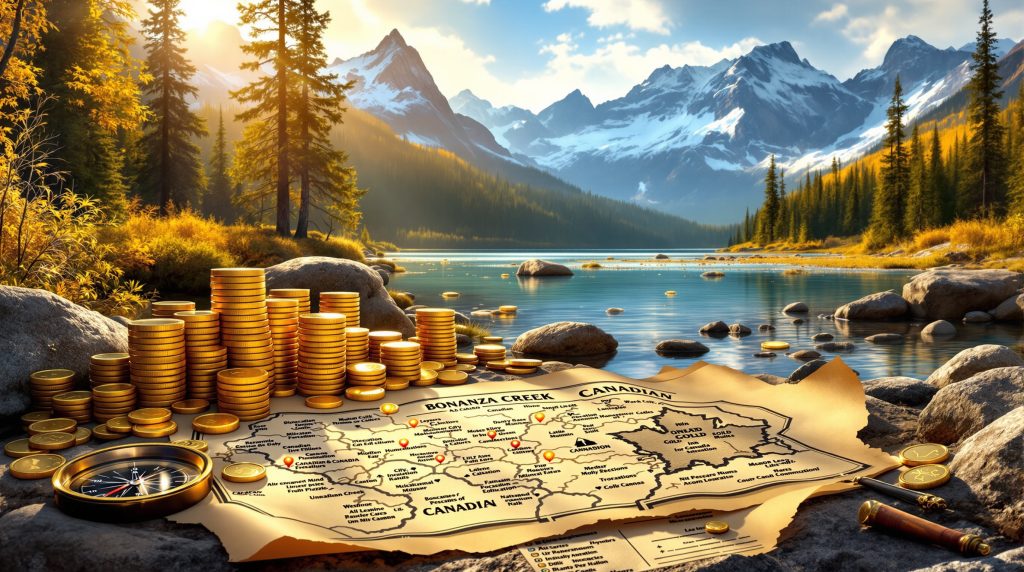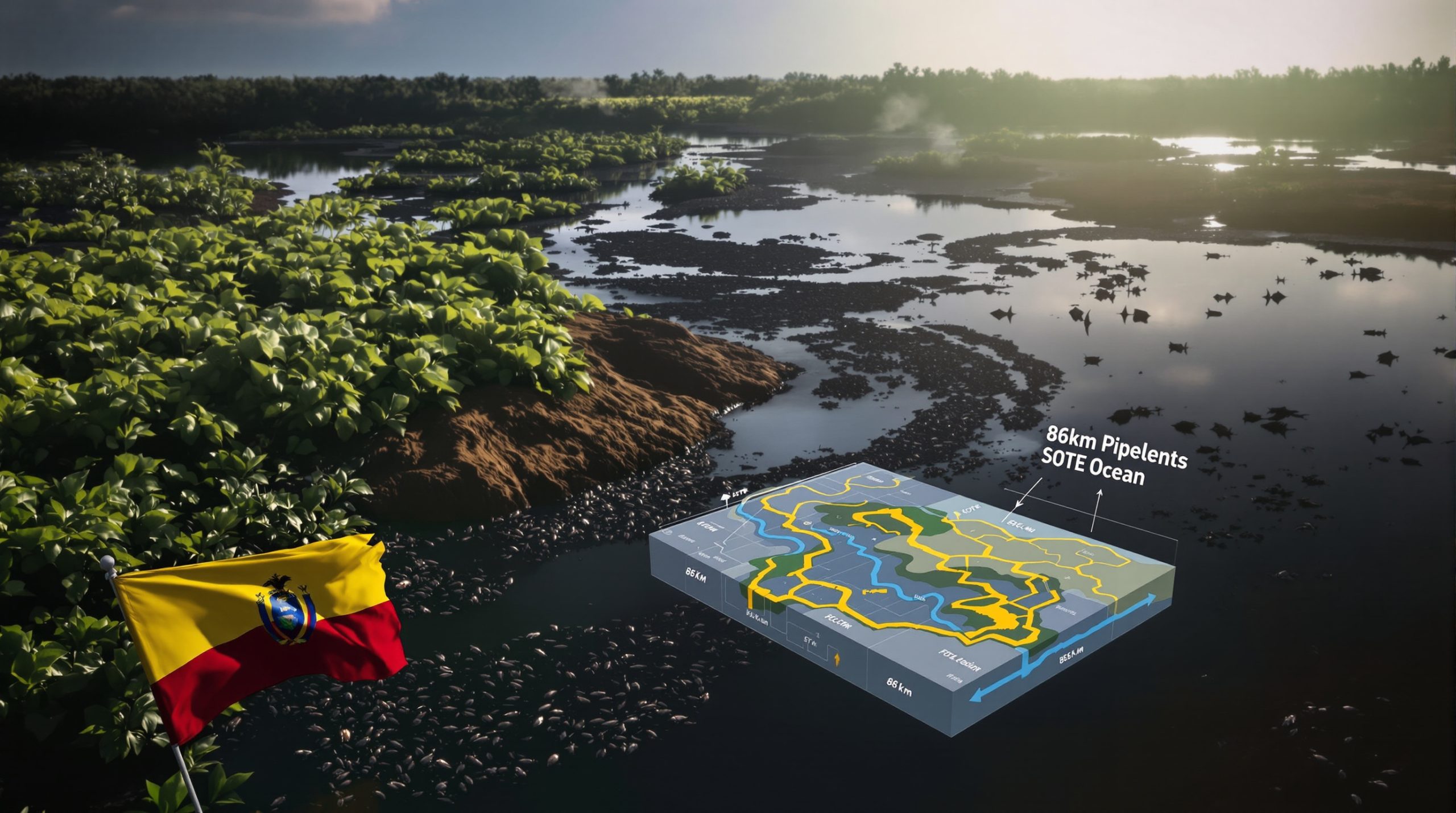The Great Canadian Treasure Hunt: First Winner Strikes Gold
The Great Canadian Treasure Hunt has emerged as one of North America's most ambitious treasure-hunting competitions, capturing the imagination of adventure seekers across the country. This nationwide quest combines historical knowledge, outdoor exploration, and puzzle-solving skills as participants search for hidden treasures across Canada's vast landscape.
The competition features regional treasure caches distributed throughout Canadian provinces and territories, with a progressive jackpot structure that includes a national grand prize. According to recent reports from Mining.com, the main prize is valued at $1 million and continues to grow as record-high gold prices increase in the global market.
How The Hunt Works
The competition's structure encourages participants to solve complex puzzles and follow clues that lead to physically hidden treasures. Each location has been carefully selected to connect with Canada's rich history, particularly its gold mining heritage.
Treasure hunters must combine research skills with fieldwork, often exploring historic sites with significant cultural importance. The multi-tiered prize structure, featuring both regional and national rewards, keeps participants engaged regardless of their location within Canada.
Who Is The First Big Winner?
September 2025 marked a significant milestone for the Great Canadian Treasure Hunt with the announcement of its first major winner. Gina Anderson, a resident of White Horse in Yukon Territory, made history by discovering six 1-ounce gold coins valued at over $30,000 near the historic Dawson City region.
Anderson's discovery represents the first of twelve regional prizes distributed throughout the country, demonstrating that success in the competition is achievable despite its challenges.
The Winning Moment
When interviewed by Mining.com following her discovery, Anderson described experiencing that special moment of clarity when all the puzzle pieces aligned. She explained the feeling that motivated her to pursue the final location – that distinctive sensation that treasure hunters universally recognize when they're on the right track.
This breakthrough demonstrates how the competition rewards both intellectual problem-solving and the willingness to explore historic locations with significance to Canada's mining heritage. Anderson's success story serves as inspiration for thousands of other participants still searching for the remaining caches.
What Makes This Treasure Hunt Unique?
The Great Canadian Treasure Hunt stands apart from other treasure-hunting competitions through its nationwide scope and connection to Canada's mining history. By spanning all Canadian provinces and territories, the hunt creates a truly national experience that celebrates the country's geographical diversity.
The competition's structure incorporates both regional prizes and a national jackpot, ensuring that participants across the country have opportunities for success regardless of their location. This approach democratizes the treasure hunting experience while maintaining the excitement of a grand prize.
Economic Impact
The hunt naturally drives interest to historic sites and remote locations that might otherwise receive limited tourism. As hunters follow clues and explore different regions, local economies benefit from increased visitor traffic to communities connected with Canada's mining heritage.
The timing of the competition alongside historically high gold market performance adds another dimension to the experience, as the value of prizes increases with market fluctuations. This economic reality mirrors the historical gold rushes that shaped many Canadian communities, particularly in regions like the Yukon.
How Are Participants Finding Success?
Successful treasure hunters appear to be combining historical research with strong puzzle-solving abilities. The competition rewards those who develop a deep understanding of Canada's mining history, as many clues connect to historical events and locations significant to the country's resource development.
Anderson's success near Dawson City, a location synonymous with the Klondike Gold Rush, demonstrates how historical knowledge creates advantage in the competition. The Klondike region represents one of Canada's most famous gold mining districts, drawing thousands of prospectors in the late 1890s and establishing the foundation for modern Yukon.
Common Challenges Faced
Treasure hunters face numerous obstacles, including Canada's challenging weather conditions that can limit exploration in certain seasons. The country's vast geography presents logistical challenges, requiring participants to narrow their search areas through careful analysis of clues.
Competition from thousands of other treasure hunters adds pressure to solve puzzles quickly, while maintaining the secrecy of potential solutions to avoid tipping off other participants. This dynamic creates a fascinating balance between community collaboration and individual competition.
What's The Connection To Canada's Mining Heritage?
The Great Canadian Treasure Hunt intentionally celebrates Canada's rich mining history, with many treasure locations connected to historic mining sites. The discovery near Dawson City perfectly exemplifies this connection, as this region was the epicenter of the famous Klondike Gold Rush that transformed Canada's northern territories.
The competition creates educational opportunities about Canada's resource development history, encouraging participants to learn about the geological and historical factors that made certain regions prosperous mining centers. This educational component adds depth to what might otherwise be a simple treasure hunt.
Modern Mining Context
The contest unfolds against the backdrop of strong precious metals markets, with gold market trends reaching historically high levels. This economic reality mirrors the excitement of historical gold rushes while highlighting Canada's continued importance in global mining.
The treasure hunt connects recreational gold seeking with Canada's professional resource sector, which remains a critical component of the national economy. This connection demonstrates the enduring cultural and economic value of precious metals in Canadian society.
What Happens After Finding Treasure?
Winners in the Great Canadian Treasure Hunt must document their discoveries according to the competition's verification protocols. While specific details about the verification process aren't publicly documented, standard procedures for similar competitions typically involve photographic evidence, location confirmation, and validation of the puzzle solution that led to the discovery.
Once verified, winners receive the full market value of their discovered treasure. In Anderson's case, this amounted to over $30,000 worth of gold coins, representing one of twelve regional prizes distributed across Canada.
Tax Implications
Prize winnings in Canada are generally subject to tax regulations, with specific rules depending on how the competition is classified. Winners typically need professional tax guidance to understand their obligations, as the tax treatment may differ depending on whether the prizes are considered contest winnings, found property, or another classification.
The valuation of gold prizes based on current upward gold price forecast adds another layer of complexity, as the value of precious metals fluctuates daily. This variable creates interesting tax planning considerations for winners in the competition.
What's Next For The Great Canadian Treasure Hunt?
With Anderson's discovery representing just one of twelve regional prizes, eleven caches remain undiscovered across Canada. Additionally, the national jackpot valued at over $1 million awaits a grand prize winner, with its value potentially increasing alongside rising gold prices.
The competition maintains momentum through the periodic release of additional clues, helping to guide participants who may be struggling with particularly challenging puzzles. This approach ensures continued engagement while gradually increasing the likelihood that all prizes will eventually be discovered.
Future Competitions
The success of the inaugural Great Canadian Treasure Hunt raises questions about whether this could become a recurring event. Similar treasure hunting competitions internationally have developed into annual traditions, suggesting potential for the Canadian model to establish itself as a regular fixture in the adventure tourism landscape.
The combination of outdoor adventure, historical education, and substantial prizes creates a compelling format that could attract international attention in future iterations. The competition's focus on Canada's mining heritage provides a distinctive identity that separates it from other treasure hunts globally.
How Does This Compare To Other Treasure Hunts?
The Great Canadian Treasure Hunt joins a tradition of notable treasure hunting competitions worldwide. Among the most famous is the Forrest Fenn treasure hunt, which featured a $2 million cache hidden somewhere in the Rocky Mountains that remained undiscovered for a decade until 2020.
Similarly, The Secret (created by Byron Preiss) has captivated treasure hunters since 1982 with twelve buried treasures across the United States, of which only three have been found after more than four decades. In France, the Golden Owl treasure hunt has remained unsolved for over 30 years.
Distinguishing Features
What separates the Great Canadian Treasure Hunt from its predecessors is its combination of national scope with regional opportunities. While many treasure hunts focus on a single grand prize, the Canadian model's tiered structure creates multiple success stories like Anderson's while maintaining the excitement of a million-dollar jackpot.
The competition also benefits from modern digital communities, allowing participants to share insights through social media and online forums. This gold market resurgence aspect enhances engagement while creating networks of treasure hunters who can collaborate on particularly challenging puzzles.
FAQ: The Great Canadian Treasure Hunt
How do I register for the treasure hunt?
Registration information is available through the competition's official channels. New hunters can join at any time, though they'll be competing against participants who may have a head start on solving certain puzzles. The registration process typically involves an entry fee that contributes to the overall prize pool.
Are there hints for the remaining treasures?
The competition releases periodic clues through official channels to maintain momentum and interest. Additionally, community forums have become valuable resources for collaborative puzzle-solving, where participants can share insights without revealing complete solutions.
What happens if no one finds the grand prize?
Most treasure hunts of this scale establish end dates with contingency plans. If the main jackpot remains undiscovered by a predetermined deadline, organizers typically release increasingly specific clues until a winner emerges, ensuring the competition reaches a satisfying conclusion.
Is special equipment needed for treasure hunting?
While basic outdoor gear is recommended for field explorations, particularly in remote areas, the competition is designed to be accessible without specialized equipment. The emphasis remains on intellectual problem-solving rather than technical capabilities or specialized tools.
A Modern Gold Rush
The Great Canadian Treasure Hunt has successfully revitalized interest in Canada's gold mining heritage while creating a nationwide adventure for thousands of participants. Gina Anderson's discovery near Dawson City represents just the beginning of what promises to be an exciting nationwide treasure hunt, combining historical appreciation with modern puzzle-solving in a uniquely Canadian context.
The competition demonstrates how resource sector history can be transformed into contemporary entertainment with both economic and educational benefits. As hunters continue searching for the remaining eleven regional prizes and the national jackpot, the Great Canadian Treasure Hunt seems poised to write a new chapter in Canada's rich gold mining narrative.
As gold prices continue their upward trajectory, the value proposition for participants becomes even more compelling, mirroring the economic forces that drove historical gold rushes. This modern treasure hunt captures the enduring allure of gold that has shaped Canadian history for generations, now reimagined as a nationwide adventure for the 21st century.
Want to Spot the Next Major Mineral Discovery Before the Market Does?
Discover how real-time alerts from Discovery Alert's proprietary Discovery IQ model can give you a decisive edge in identifying significant ASX mineral discoveries before they make headlines. Visit our discoveries page to see how historic discoveries have delivered exceptional returns for early investors.




